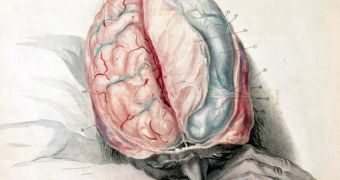When people go blind, they lose one of the most important senses an individual can have. Single-handedly, sight accounts for the usage of massive amounts of processing power inside the brain. When the sense vanishes, the brain is left with a lot of “computing hours” to spare, and scientists at the University of California in Los Angeles (UCLA) have recently shown that the cortex is able to reorganize itself, by heightening other senses, e! Science News reports.
This may help explain why blind people continue to go about their days undisturbed, busily walking the streets and running errands just like any normal person. How they are able to do that has been a mystery to investigators until recently, but the new study may help shed some light on that issue. Details of the work will appear in the upcoming, January print issue of the journal NeuroImage, but the work is already available online.
“This study shows the exceptional plasticity of the brain and its ability to reorganize itself after a major input – in this case, vision – is lost. In other words, it appears the brain will attempt to compensate for the fact that a person can no longer see, and this is particularly true for those who are blind since early infancy, a developmental period in which the brain is much more plastic and modifiable than it is in adulthood,” UCLA Laboratory of Neuro Imaging postgraduate researcher Natasha Lepore explains.
The research also showed that the visual regions of the brain were a lot smaller in the brains of blind people than in the brains of the individuals who still retained the sense. The same correlation did not hold true for other regions of the cortex that were responsible for integrating the other four senses – hearing, taste, touch and smell. All of these cortical regions grew larger in the brains of people who were blind, as evidenced by brain scans. This essentially means that the cortex is able to compensate for the lost senses, by boosting the remaining ones. An imaging method known as tensor-based morphometry was used for the new investigation, the team reports.
The development of neuroimaging tools “allowed researchers to probe inside the brain in a non-invasive manner, yielding insights into the impressive adaptive capacity of the brain to reorganize itself following injury or sensory deprivation,” Lepore concludes.

 14 DAY TRIAL //
14 DAY TRIAL //